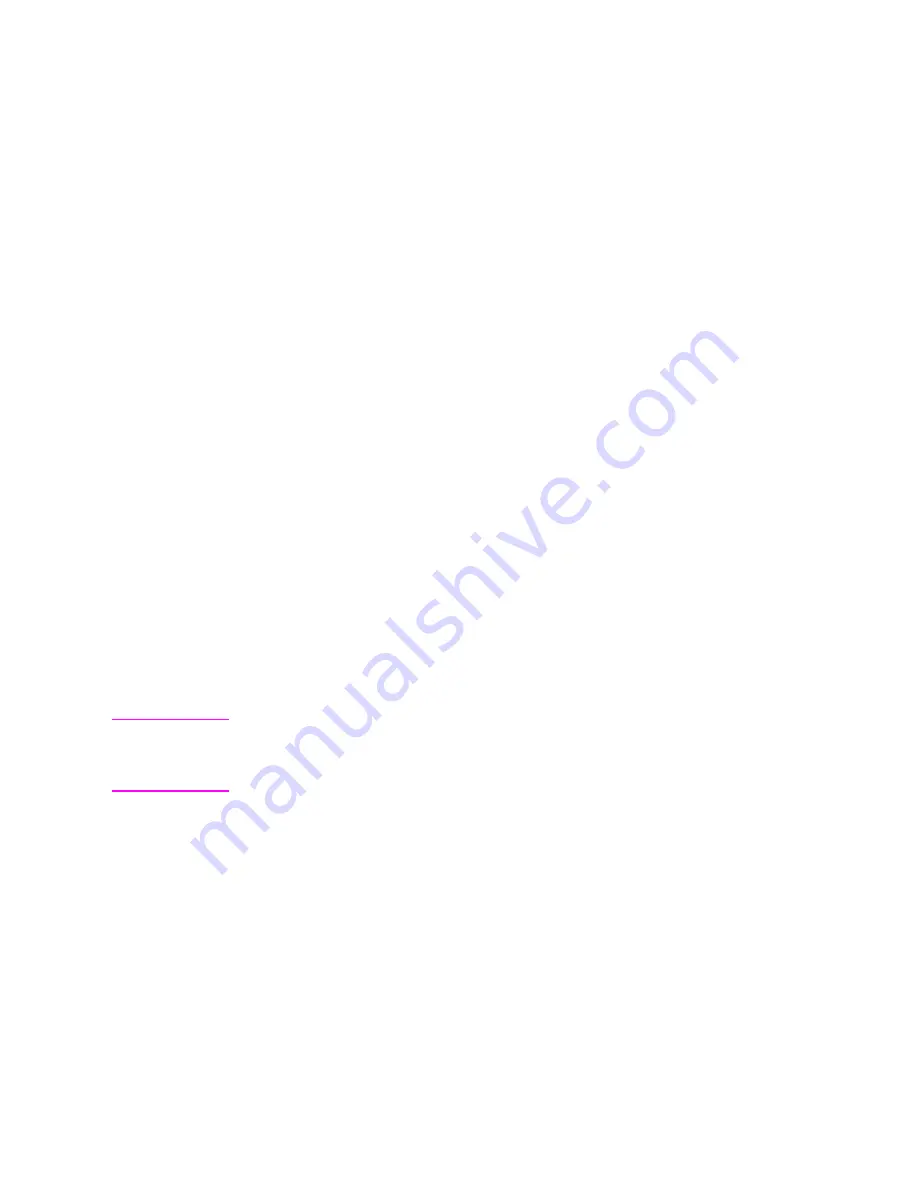
EN
Transfer Raster Data Command 15-29
Transfer Raster Data Command
The Transfer Raster Data command is used to transfer a row of raster
data to the printer.
E
C
* b # W [raster data]
Default
= N/A
Range
= 0 - 32767
The value field (#) identifies the number of bytes in the raster row.
These bytes are interpreted as one row of raster graphics data that
is printed at the current Y position at the left raster graphics margin.
Upon completion of this command, the cursor position is at the
beginning of the next raster row at the left raster graphics margin.
Within the raster data, each bit describes a single dot. The most
significant bit (bit 7 is the most significant, bit 0 is the least significant)
of the first byte of data corresponds to the first dot within the row. If a
bit is set to 1, the corresponding dot is printed. Each dot of the raster
data is expanded according to the specified raster resolution.
Raster graphics is independent of the text area and perforation skip
mode – these boundaries are ignored.
Raster graphic images, raster height, and raster width are limited to
the printable area; images that extend beyond the printable area are
clipped.
Note
The byte count of the value field in the Transfer Raster Data
command has precedence over the literal or the command byte,
byte count. For example, the command,
E
C
*b2m3W [binary data]
sets compression method=2 and sends 3 bytes of raster data for the
row. Suppose the binary data appears as follows:
00000010 00000001 00000001 00000001
The control (first) byte value of +2 indicates that 3 bytes of literal
(unencoded) raster data will follow. The Transfer Raster Data
command, however, specified only three bytes total (including the
control byte) in the raster row. The control byte and the following two
data bytes are read, and the remaining data byte is ignored.
Summary of Contents for LaserJet 4100
Page 1: ...Part I Click here to access Part II on hp com ...
Page 2: ......
Page 26: ...Contents 14 EN ...
Page 44: ...2 10 The Page EN ...
Page 54: ...3 10 The Print Environment EN ...
Page 70: ...4 16 PCL Job Control Commands EN ...
Page 80: ...5 10 Page Control Commands EN Figure 5 3 Changing Print Direction on a Page ...
Page 82: ...5 12 Page Control Commands EN Figure 5 4 Text Area Within the Page ...
Page 110: ...6 16 Cursor Positioning EN ...
Page 120: ...7 10 Fonts EN Figure 7 11 Bitmap Character Figure 7 12 Scalable Character ...
Page 122: ...7 12 Fonts EN ...
Page 152: ...8 30 PCL Font Selection EN ...
Page 166: ...9 14 Font Management EN ...
Page 182: ...10 16 User Defined Symbol Sets EN ...
Page 237: ...EN Character Descriptor Formats 11 55 Figure 11 5 Class 2 Character Data ...
Page 240: ...11 58 Soft Font Creation EN Figure 11 6 Portrait Character Example ...
Page 241: ...EN Character Descriptor Formats 11 59 Figure 11 7 Landscape Character Example ...
Page 270: ...13 4 The PCL Print Model EN Figure 13 3 Effect of Transparency Modes on Images ...
Page 276: ...13 10 The PCL Print Model EN Figure 13 4 Shading Patterns ...
Page 277: ...EN Pattern ID Area Fill ID Command 13 11 Figure 13 5 Cross Hatch Patterns ...
Page 290: ...13 24 The PCL Print Model EN ...
Page 297: ...EN Pattern ID Area Fill ID Command 14 7 Figure 14 1 Shading Patterns ...
Page 298: ...14 8 PCL Rectangular Area Fill Graphics EN Figure 14 2 Cross hatch Patterns ...
Page 341: ...EN Raster Graphics Example 15 33 Figure 15 11Example of Raster Graphic Image Data ...
Page 342: ...15 34 Raster Graphics EN ...
Page 370: ...16 28 Status Readback EN ...
















































